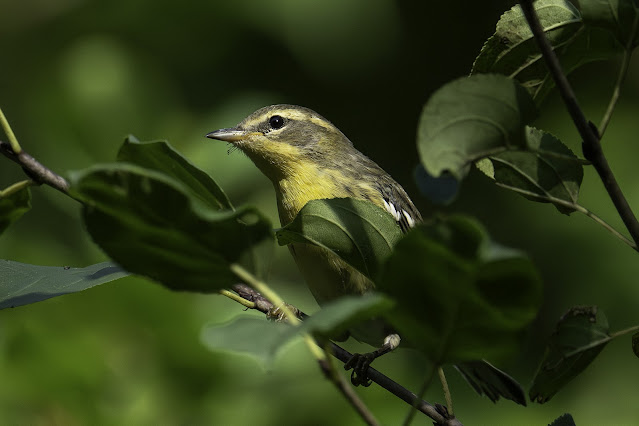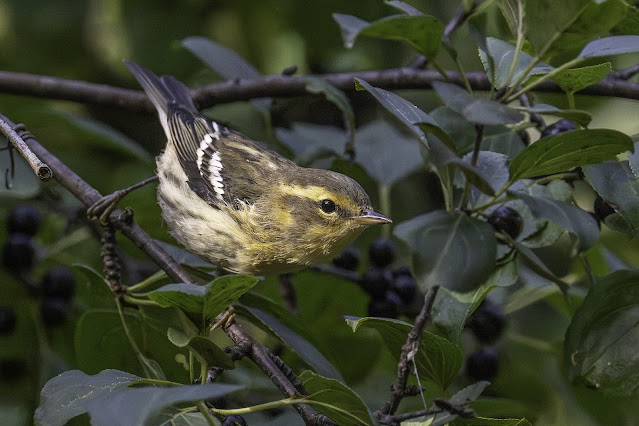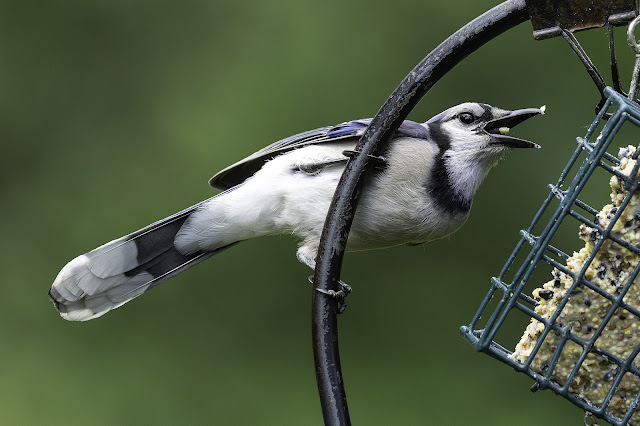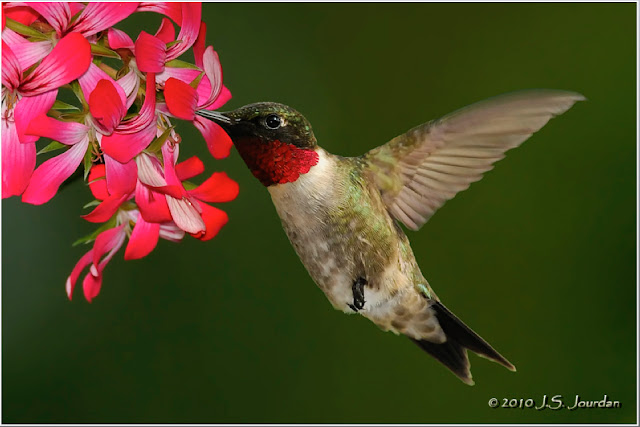Bay-breasted or Pine??? - 21 Aug 2024

With clear skies and mild temps (60F) and little wind it was ideal for chasing warblers at Elizabeth. I ran into one flock at the north end of the woodlot in the center of the park, and not even barking dogs and grass cutters could keep them from foraging at eye-level and below. Unfortunately, they were moving fast this morning, so they were not hanging around. This was why I had to shoot fast and worry about IDs later.
Once again the Blackburnian Warblers dominated the flock. 3-4 birds would scatter at any moment and decisions had to be made which bird to chase. Shooting was difficult and I was happy to settle for any sharp images (again, it helped to shoot Auto-ISO between 100-64,000). Autofocus could not keep up and many missed shots were had due to slow focusing.

Aug 21, 2024 10:02 AM - 10:05 AM
Protocol: Traveling
1.1 mile(s)
Checklist Comments: Clear, mild, 60F, winds 0-5 mph
30 species
Canada Goose (Branta canadensis) 124
Mourning Dove (Zenaida macroura) 2
Ring-billed Gull (Larus delawarensis) 4
Turkey Vulture (Cathartes aura) 6
Sharp-shinned Hawk (Accipiter striatus) 1
Red-bellied Woodpecker (Melanerpes carolinus) 1
Eastern Wood-Pewee (Contopus virens) 2
Great Crested Flycatcher (Myiarchus crinitus) 1
Red-eyed Vireo (Vireo olivaceus) 1
Blue Jay (Cyanocitta cristata) 4
Black-capped Chickadee (Poecile atricapillus) 2
Tufted Titmouse (Baeolophus bicolor) 1
Tree Swallow (Tachycineta bicolor) 5
Northern Rough-winged Swallow (Stelgidopteryx serripennis) 8
Barn Swallow (Hirundo rustica) 4
White-breasted Nuthatch (Sitta carolinensis) 1
Carolina Wren (Thryothorus ludovicianus) 1
Gray Catbird (Dumetella carolinensis) 1
House Sparrow (Passer domesticus) 2
Common Grackle (Quiscalus quiscula) 8
Black-and-white Warbler (Mniotilta varia) 1
Tennessee Warbler (Leiothlypis peregrina) 2
American Redstart (Setophaga ruticilla) 1
Cape May Warbler (Setophaga tigrina) 1
Magnolia Warbler (Setophaga magnolia) 1
Bay-breasted Warbler (Setophaga castanea) 2
Blackburnian Warbler (Setophaga fusca) 7
Chestnut-sided Warbler (Setophaga pensylvanica) 1
Pine Warbler (Setophaga pinus) 2
Northern Cardinal (Cardinalis cardinalis) 2
View this checklist online at https://ebird.org/checklist/S1
This report was generated automatically by eBird v3 (https://ebird.org/home)



































